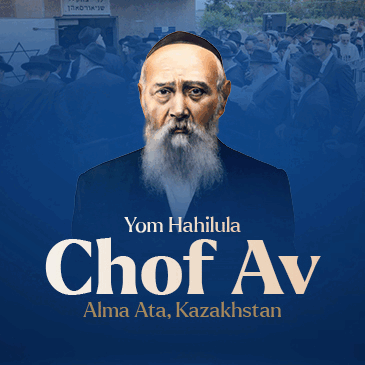In my last post I wrote about the legions of people who exploit Sukkot for profit. There's another group of people I should mention who exploit the holiday for a totally different purpose.
At Pennsylvania's Hershey Park on Monday, filled almost entirely with Jewish guests celebrating Chol Hamoed courtesy of NCSY, Naftali, Nissim and Mushka Pewzner spent the day with lulav and etrog in hand, offering the thrill-seekers an opportunity to make the blessing in between roller coaster rides. They were undeterred by the pouring rain that lasted most of the day, and at nightfall Mushka said that by their combined tally the siblings, children of the Chabad Lubavitch emissary in Harrisburg, Rabbi Shmuel Pewzner, they had assisted in 825 brachot. They had kept count the way others would track sales profits.
At An Amusement Park, The Thrill Of A Mitzvah
In my last post I wrote about the legions of people who exploit Sukkot for profit. There’s another group of people I should mention who exploit the holiday for a totally different purpose.
At Pennsylvania’s Hershey Park on Monday, filled almost entirely with Jewish guests celebrating Chol Hamoed courtesy of NCSY, Naftali, Nissim and Mushka Pewzner spent the day with lulav and etrog in hand, offering the thrill-seekers an opportunity to make the blessing in between roller coaster rides. They were undeterred by the pouring rain that lasted most of the day, and at nightfall Mushka said that by their combined tally the siblings, children of the Chabad Lubavitch emissary in Harrisburg, Rabbi Shmuel Pewzner, they had assisted in 825 brachot. They had kept count the way others would track sales profits.
When asked by a young passerby if she got paid for her work, Mushka said that, on the contrary, she paid for her admission to the park, like everyone else. When asked if they took the opportunity to enjoy a few rides at any point, they said no. “One of the campaigns of the Lubavitcher Rebbe is to encourage every Jew, throughout the year but especially on Sukkot, which is the festival of unity, to do a mitzvah, and the mitzvah of the four species is the symbol of that unity,” Naftali Pewzner told me, in the style of a budding young rabbi.
The lulav blends the three species mentioned in the Torah of palm, myrtle and willow branches with the citrus of the etrog. One theory behind the practice is that it symbolizes the desire to unite four different types of Jews: those who study Torah but don’t perform good deeds, those who do good deeds but don’t study Torah, those who do neither and those who do both. The blessing is recited each day during Sukkot, except Shabbat.
Given the level of observance of the crowd, overwhelmingly Orthodox, the fact that the Pewzners were accommodate so many people suggests that many may have left the house in a hurry and forgot to perform the mitzvah. Maybe some counted on doing it when they got home. For some who are not fervently observant and lead busy work and family lives (your blogger bows his head humbly while writing this) the rituals of the holiday — eating in the Sukkah, blessing the species, reciting Hallel — may fall by the wayside during the intermittent days. A few in the crowd who took advantage of the NCSY group-rate trip may never have made the blessings before, or even known of it. Through the actions of these Chabadniks, all of the above Jews were, for a few brief moments, united together.
Mushka and her brothers may not have earned a paycheck or taken the chance to ride on Fahrenheit or Stormrunner, but they can certainly feel fulfilled in carrying out their late Rebbe’s mission.
















ss
put more pics
impressed
wow! Kol Hakavod Pewzner family!